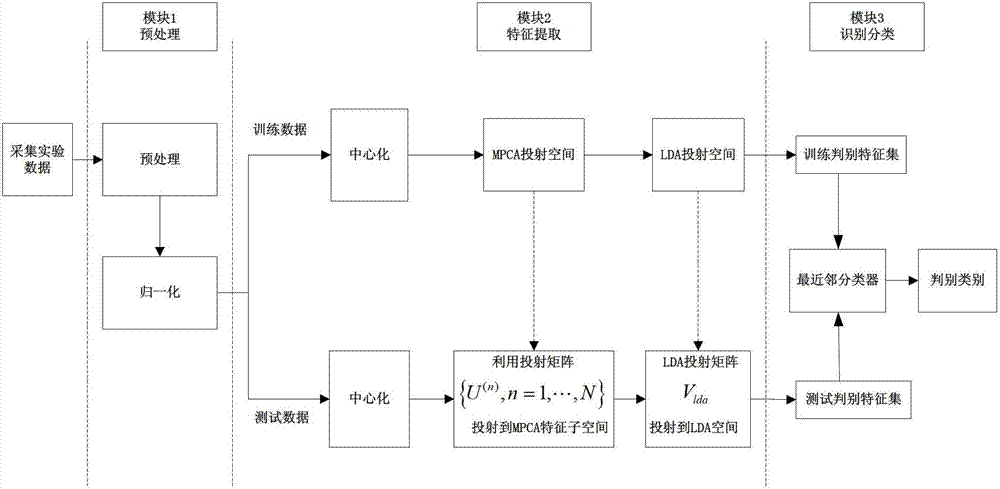Brain cognitive state judgment method based on polyteny principal component analysis
A technology of principal component analysis and state judgment, applied in the direction of instruments, character and pattern recognition, computer components, etc., can solve the problem of not being able to fully maintain the redundancy and structure of the original image, destroying the structure and correlation of the original image, and the effect of dimensionality reduction is not good. Ideal and other issues
- Summary
- Abstract
- Description
- Claims
- Application Information
AI Technical Summary
Problems solved by technology
Method used
Image
Examples
Embodiment Construction
[0063] The present invention will be described in detail below in conjunction with specific embodiments.
[0064] Step 1, combine the attached figure 1 Module 1 of the description: the preprocessing part.
[0065] First, collect the functional data of behavioral experiments and preprocess the functional data. The purpose is to remove some influencing factors that have nothing to do with the task mixed in the data collection process, so as to improve the signal-to-noise ratio of the image and better improve the mathematical modeling. and the efficacy of the analysis. Here, the SPM software is used to preprocess the brain fMRI data, and the steps include:
[0066] 1) Time slice correction, the purpose is to correct the difference in the acquisition time point between the layers that make up the voxel. Because there are many ways to scan time slices, and each slice is acquired at a different time point, this difference will have a certain impact on statistical analysis.
[00...
PUM
 Login to View More
Login to View More Abstract
Description
Claims
Application Information
 Login to View More
Login to View More - R&D
- Intellectual Property
- Life Sciences
- Materials
- Tech Scout
- Unparalleled Data Quality
- Higher Quality Content
- 60% Fewer Hallucinations
Browse by: Latest US Patents, China's latest patents, Technical Efficacy Thesaurus, Application Domain, Technology Topic, Popular Technical Reports.
© 2025 PatSnap. All rights reserved.Legal|Privacy policy|Modern Slavery Act Transparency Statement|Sitemap|About US| Contact US: help@patsnap.com



